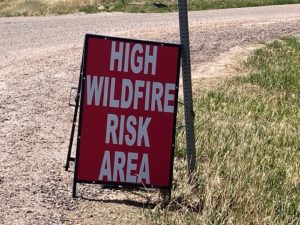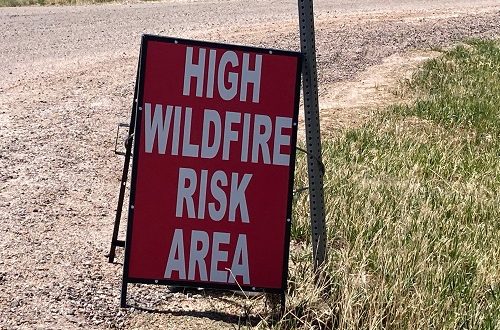Wildfire Danger Ratings
Living in fire-prone parts of the U.S. will mean seeing certain signposts. These indicate the danger ratings of fires, whether you’re in an area with a low danger rating up to an extreme danger ratings.
You’ll want to pay attention to the signs. They don’t just tell you the chances of a fire happening, but the chances of those fires being a huge concern for your family and your home. Different countries have different ratings,
Low and Moderate Risks of Fire
A “Low” rating is also considered Green. This is when the risk of a fire starting is low but it’s not impossible. However, it will be hard for a fire that has started to spread. This could be due to a lot of falling rain or snow covering that keeps the forest areas damp most of the year.
In fact, areas with a Low fire danger rating will often have a higher flood danger rating!
Moderate ratings are Blue. Low risk areas can become Moderate depending on the time of the year. A good portion of the year is when the Moderate danger rating is in place, and it’s when there’s a good amount of moisture but fires can still start relatively easily. The good news is that the moisture helps to keep the risk of fires spreading to a minimum.
You’ll still want to take precautions during these times of year.
High and Very High Risks of Fire
High—the Yellow time of year—is usually the rating in place throughout the late summer. Grass has turned brown, and it is easy for fires to start. They can also spread quickly due to the lack of moisture.
This is usually when you’ll find a Stage 1 fire ban in place, which means no fireworks and outdoor smoking. Campfires must be kept to designated areas. You can relax a little this time of year, but do stay alert.
Very High is the rating you want to be vigilant about. This Orange rating means that the weather has been hot and dry for prolonged periods of time. Small fuels will ignite with just a small spark, and that fire can spread quickly.
You will usually find a Stage 2 fire ban in place, which means no open fire at all. Even chainsaw use, off-road motor vehicle use, and other tool use has been prohibited during this time to prevent a spark. You’ll want to make sure you have an evacuation kit ready and run through the procedures with your family.
Extreme Fire Risks
The final level is Extreme, which is Red. You’ll want to make sure your vehicles are packed and ready to go if you see the danger rating jump to this. There is a huge risk of the fires not just starting but spreading rapidly.
The grass is extremely dry. You may even find that most of the trees are dry, and the firefighters are getting ready for calls to act as quickly as possible.
